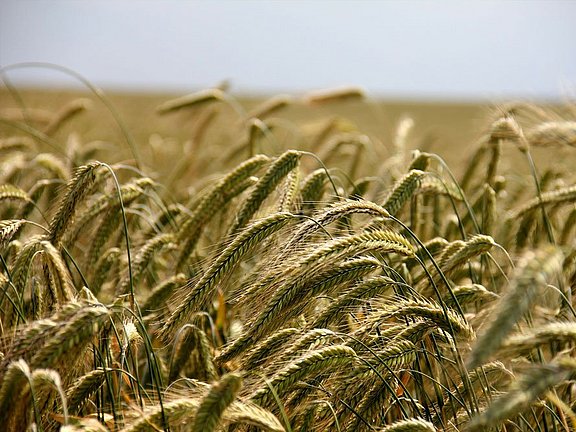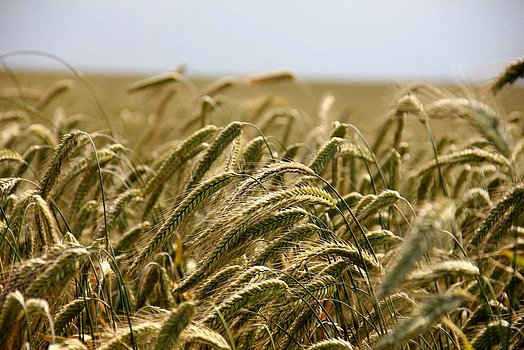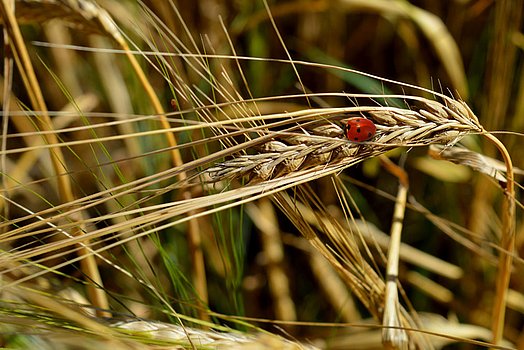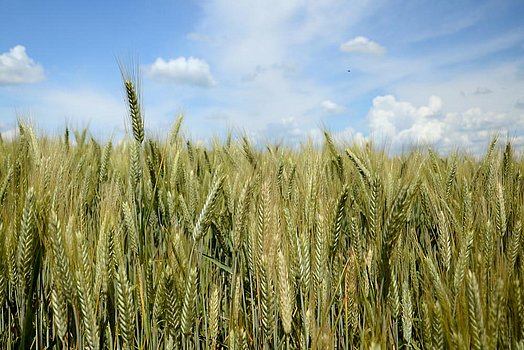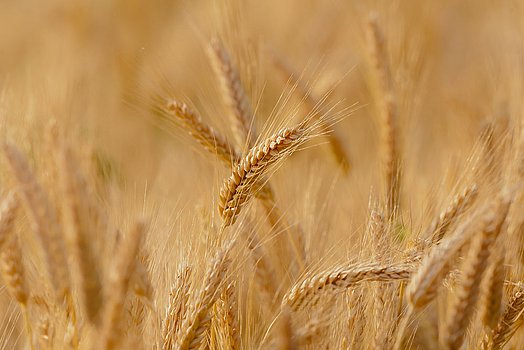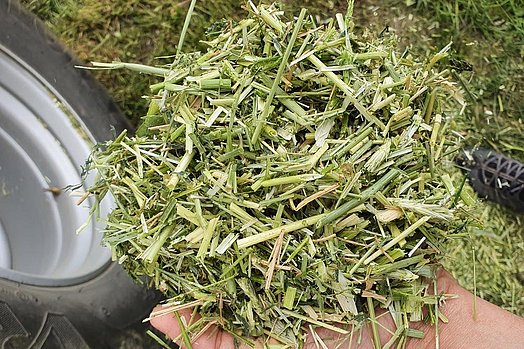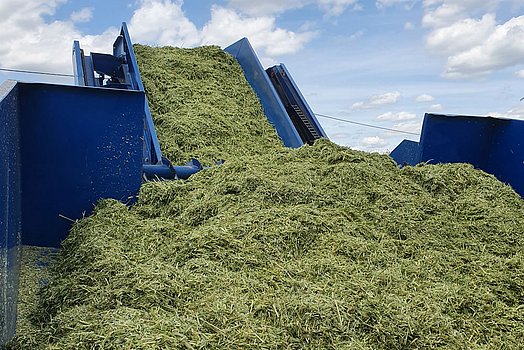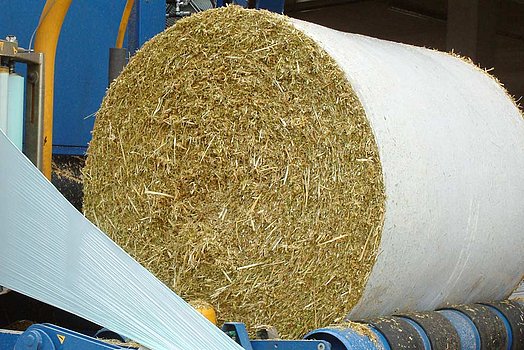Whole crop silage - an alternative to maize?
For some years now, whole crop silage (WCS) has come increasingly into focus as an alternative to maize.
When and in what regions can it be used?
- In persistent drought.
- As a supplement to silage maize in regions and years with a feed shortage.
- If the grassland sod is damaged and needs to be reseeded.
- If the spring season is cold, causing maize to develop slowly.
- As an alternative in constant rain if the under and upper grasses have, respectively, not developed at all or developed poorly.
- Special WCS blends are a good choice in cool and wet regions that are not ideal for maize cultivation.
- Regionality is no longer in vogue. Native plants have come to the fore.
All of these characteristics deliver convincing arguments for a closer examination of what whole crop silage has to offer.
What is whole crop silage anyway and which combinations are there?
WCS is a type of silage that is made up of grain and/or legumes that are also often blended with grasses. The grain is harvested as early as the end of milk ripeness / beginning of dough ripeness - depending on the pure stand.
Sample types of whole crop silage:
- Wheat WCS
- Barley WCS
- Triticale WCS
- Rye WCS
- Oat and fava bean WCS (with a fava bean portion not exceeding > 75%!)
- Oat and pea WCS (when selecting the pea variety, make sure to pay attention to the right bitterness!)
- Oat and trefoil WCS
- WCS mixtures of different grains combined with legumes and grasses
Benefits of cultivating WCS
The reduced hassle linked to weed control is a key argument that speaks in favor of growing whole crop silage. The added legumes minimize the need for fertilizers. Essential from the point of view of climate change are the reduced erosion of nutrients by ground cover and the protection against evaporation for nurse crops.
The mixed cultivation of grain and legumes allows for a distribution of risk: Varying with the weather pattern during the vegetation period, one culture may "offset” the other’s shortfall in yield. A reduced impact of diseases and pests is joined by dramatic improvements in soil quality. Following the early harvest, catch crops can be cultivated, and, in some cases, even a second field crop if water is channeled properly.
The significance of forage quality
The forage quality of the silage hinges on the type of the grain, on the harvest time and on the grain-straw ratio. The WCS will deliver a net energy lactation in the realm of approx. 4.5 - 6.7 per kg of DM. This will depend on different factors and on the focus they were given. Wheat usually possesses the highest energy concentration among all cereals. Next in the ranking are rye and triticales. The ranking is based on the varying digestibility of the organic substance. If wheat and triticales are cut higher (approx. 20 cm), the amount of straw and thus the portion of raw fibers can be reduced, resulting in yet another increase in starch concentration by approx. 0.6 MJ NEL/kg of DM. Awnless grain is more palatable to the animals. Adding a portion of legumes will enrich the feed ration with protein.
The effect of whole crop silage on milk yield
For dairy cows, it is possible to use quantities of 10-15 kg FM per cow and day, provided the quickly degradable starch is factored in properly. Primarily depending on the grain portion, the starch concentration ranges - depending on a variety of factors - below that of maize silage. Rations of 2/3 WCS (e.g. oat-pea WCS) and 1/3 grass silage have already been tested and has proven to be a favorite feed among the animals as they enjoy the palatability of the oats combined with the sweetness of the peas. Also beneficial is the ability to boost the fat and protein concentrations of the milk with this mixture. Keeping the milk yield constant or raising it to a higher level is challenging without adding maize to the ration. The overall ration and the supply with protein must contain rumen-based carbohydrates.
When and how will the harvest take place?
The beginning of the harvest is determined by the pure stand. It precedes the actual threshing maturity of the cereal by approx. 2-3 weeks. It corresponds to the end of milk ripeness / beginning of dough ripeness. This is when the whole crop possesses its highest digestibility and, in consequence, the highest energy content. At that time, it is still possible to press in the grain with your fingernail. The knot of the stalk and the awns are still green. Likewise are 75 percent of the leaves. The color of the stalks has already turned yellow.
For the nurse crops it is important that they havedried up sufficiently. The goal is to harness the highest possible dry mass yields and average dry mass concentrations. Ideally, the DM concentrations range between 35 and 45 percent. The lower of these two values is usually assumed for barley. This level still allows for good fermentation thanks to easily soluble carbohydrates.
Another aspect that needs to be factored in is the waiting time following the last treatment with pesticides!
If possible, the chopping length should be 6-8 mm. Stalk knots, stalks and grains must no longer be whole, as they interfere with the digestion of the ruminant and, in consequence, cause losses in energy. The awns of the grain must be “slashed” as well in order to increase digestibility. This effect can be created using a grated floor and forming roller. The higher the grain portion and the drier the cut material, the shorter the recommended chopping length.
What needs to be observed during ensilage and which type is conceivable?
An ultra-careful ensilage process is of paramount importance to whole crop silage. It is necessary to achieve high compression and cover the material immediately, as the material will otherwise heat up fast and possibly experience acetic acid formation. For these reasons, the ideal solution is ensilage in round bales. Small operations are the businesses that benefit in particular from the ability to create smaller packaged portions with the help of round bale silage. Their rapid exclusion of air and clean production flow turn our LT-Master or VARIO-Master machines into the ideal tools for this task. Whole crop silage is also possible with the G-1 F125 Kombi.
The low nitrate concentrations found in WCS promotes the formation of butyric acid. A thorough job during the harvest and the subsequence activities reduces risk. The use of ensiling agents in a bid to support the overall process is possible. The G-1 F125 Kombi, the LT-Master and the VARIO-Master can each be retrofitted with a dosing unit.
